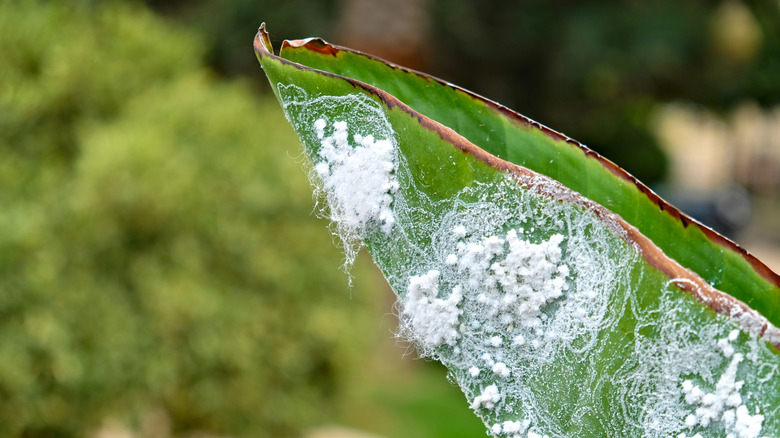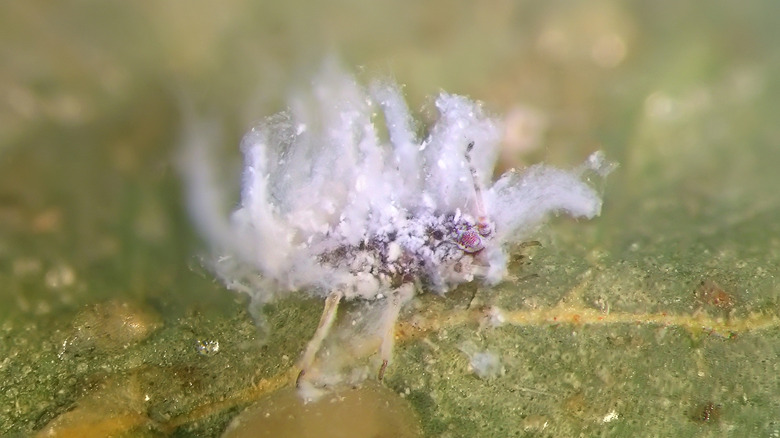No, That's Not Fuzz In The Air - It's This Pesky Invasive Insect
If you're wondering why the air is suddenly filled with white cottony fluff, you're not alone. From Reddit threads buzzing about besieged Southeastern towns to local news segments spotlighting the fuzzy phenomenon, 2025 is shaping up to be a banner year for Asian woolly aphids. The tiny white bugs feed on trees, especially the deciduous hackberry (Celtis occidentalis), one of the fast-growing trees that will make your yard a pollinator haven. This causes a sticky residue to seep out, which is why a few days before you notice your car windshield covered in downy white spots you may have asked yourself why the door handles were so darn sticky. Although the pesky invasive insect doesn't bite, and isn't generally considered harmful to your landscaping, there are still a few important things you should keep in mind when dealing with them this fall.
Asian woolly hackberry aphids are relatively new to the United States. They were first identified in the mid-1990s, likely after hitching rides on infested nursery trees imported from Asia. What makes them so noticeable right now are their dramatic numbers. The relatively harmless pests are flourishing because the conditions are just right. The Southeast is experiencing mild temperatures and offers healthy host trees. The aphids are incredibly tiny, but their distinctive bodies are coated in a waxy white filament that makes them look like lint. They feed on the sap of trees, leaving behind a sticky film known as honeydew that doesn't take long to coat your car doors, patio furniture, and sidewalks. Thankfully, the mess is temporary since the invasive pests usually die out once cooler temperatures arrive.
How to get rid of Asian woolly hackberry aphids
Although Asian woolly hackberry aphids won't typically cause fatal damage to your landscaping, their feeding habits can still create a surprising amount of mess in a short time span. The sugary honeydew secretions coat anything under an infested tree with a sticky film that isn't just unpleasant to touch — it also attracts ants, wasps, and other insects. Over time, the residue becomes an ideal breeding ground for sooty mold, a black fungal disease that can block sunlight from reaching the leaves of your plants. On some infested trees, persistent woolly aphids can cause leaf curling and dead branches. These aren't catastrophic problems, but the combination of sticky residue, dark stains, and crunchy leaves can make your entire outdoor space look and feel gunky.
Keeping woolly aphids out of your garden can be a challenge, and unfortunately, tolerating the hassle until cooler weather arrives and kills them off is usually the best course of action. To avoid honeydew wreaking havoc on your car's paint job, try a strong spray from your garden hose or a quick automatic car wash to dislodge both the aphids and their coating. On small ornamental shrubs and bushes, it's better to manually dispatch the bugs instead of using harsh chemical treatments that can have lingering effects well beyond woolly aphid season. You can also attract ladybugs to your garden, allowing the natural predators to hang out in your yard and help keep woolly aphid populations under control. But in most cases, regular rinsing and a bit of patience are all that you'll need to reclaim your yard from these pesky insects.

